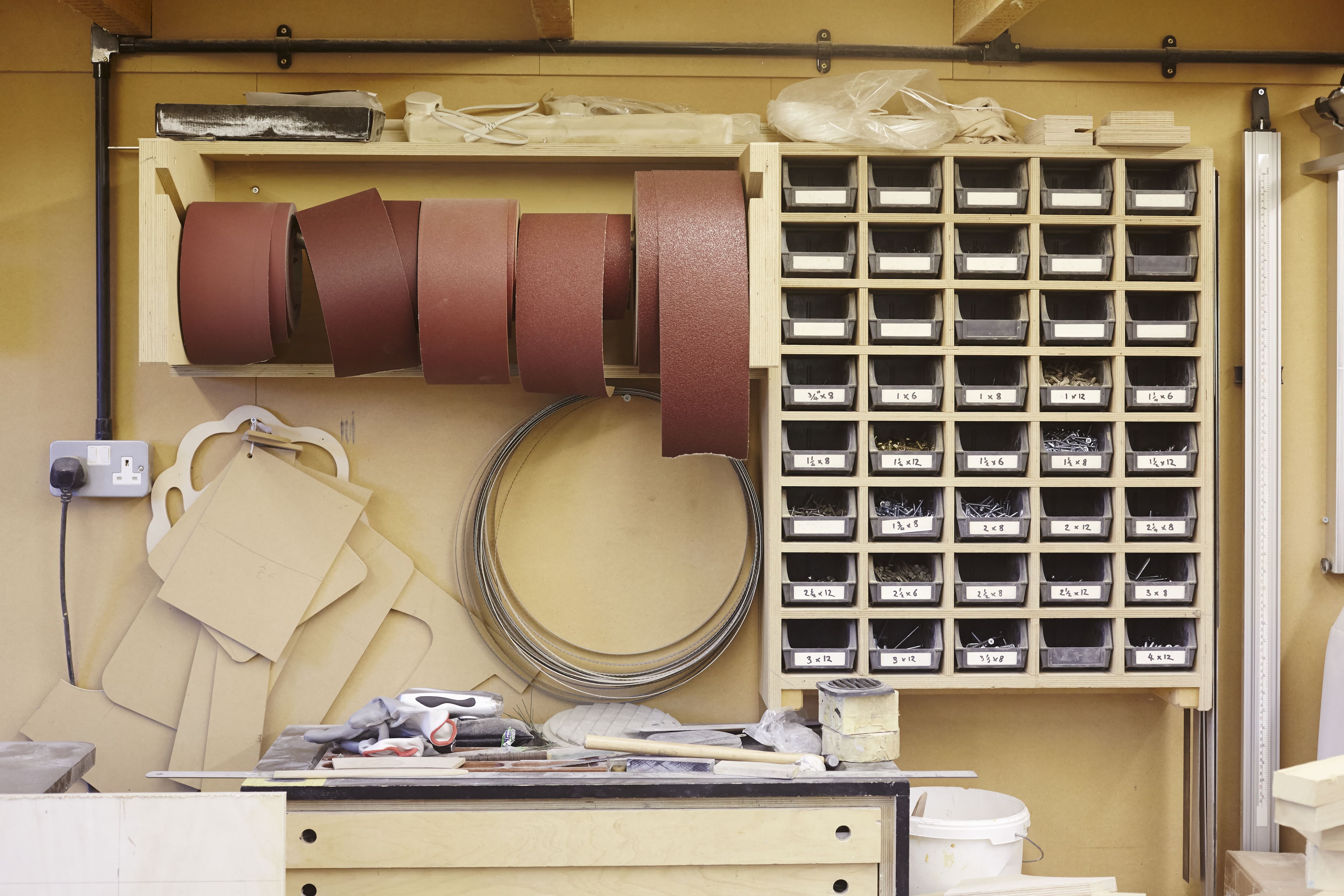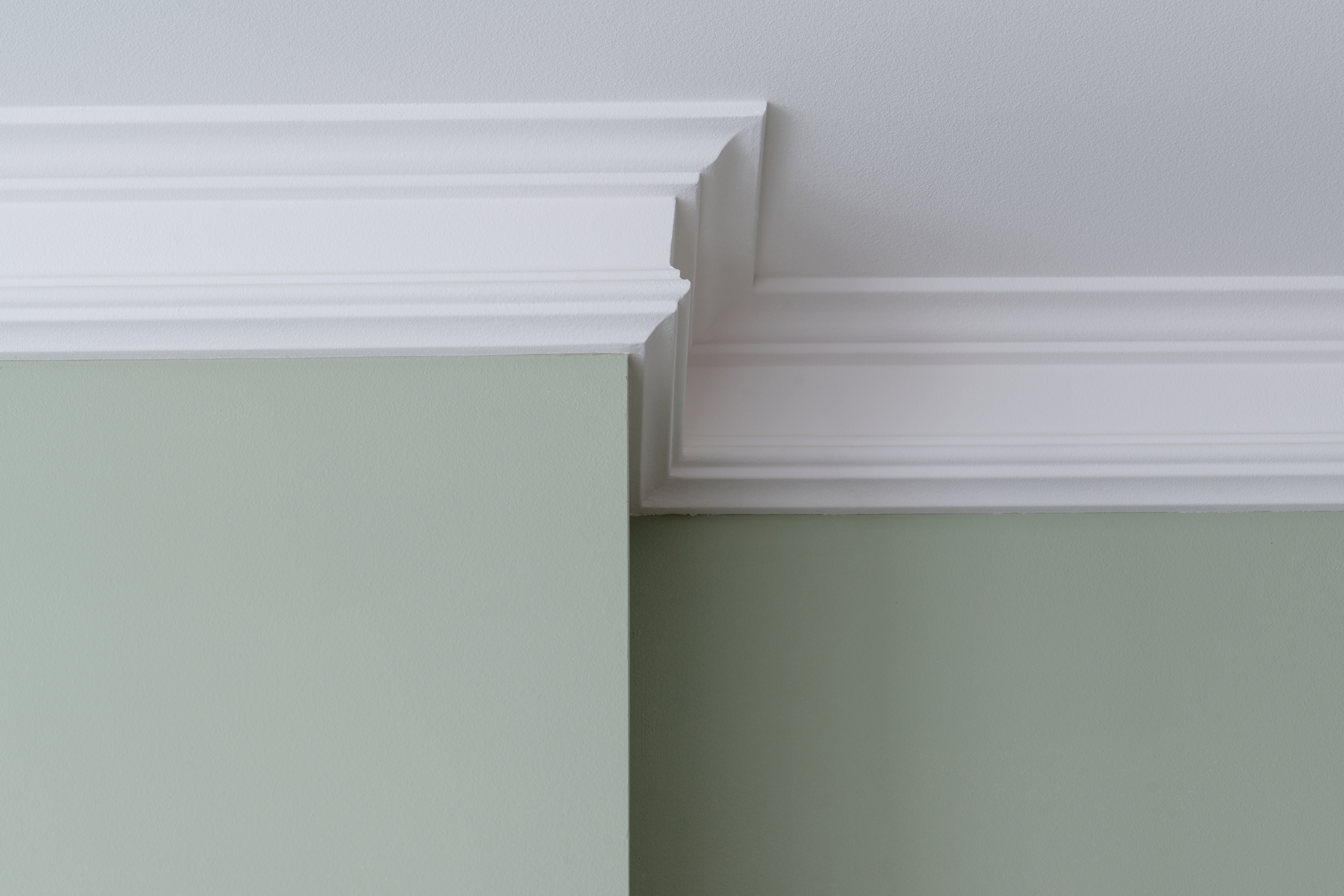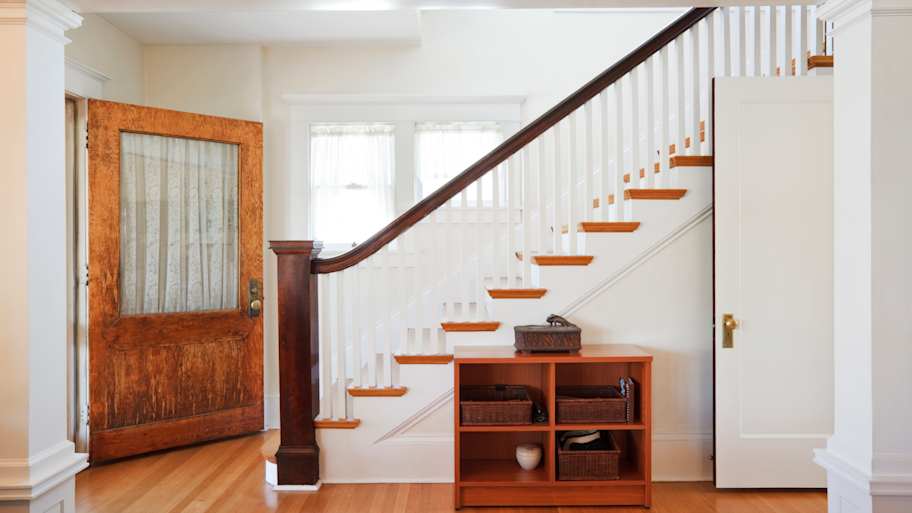
Discover the cost to install a stair railing, including average prices, key cost factors, and tips to save on your project.
Let’s get down to the nitty gritty
Sandpaper is a versatile tool, and can be used from the beginning of a project to its completion. However, choosing a sandpaper that is too rough can take off too much material, whereas a sandpaper that’s too fine won’t produce the desired effect. Use this guide to learn and how to choose the right sandpaper grit to find the best option for your project.
First things first, it’s important to understand what the grit number on sandpaper means. The grit size refers to the number of particles that make up the sandpaper This is determined by the amount of particles that fit through the filter or screen during the manufacturing process.
The most coarse sandpapers are assigned the lowest numbers. As the grit number increases, the level of abrasion decreases. Extra coarse sandpaper, used for commercial jobs, can be found as low as #12 grit, and extremely fine grits range from #800 to #1,200 grit. However, most DIY projects will fall somewhere between #60 to #220 grit.
Pro tip: Many projects will require multiple grits of sandpaper to get the best results, starting with the most coarse for the first run moving to a finer grit in each subsequent run.

Learn about the different sandpaper grit ranges to pick the right one for your project.
Best for: Heavy duty projects and removing material
Extra coarse sandpaper ranges from #24 to #36 grit. This is the most abrasive type and works well for heavy duty projects and tough jobs, such as:
Industrial sanding jobs
Shaping wood
Removing rust
Sanding old hardwood floors
Removing caked on paint or varnish
Take extra care when choosing this type of coarse grit, as it can damage the surface if this level isn’t absolutely necessary.
Best for: Removing material or paint
Coarse sandpaper typically falls between #40 to #50 grit, and it is strong enough to use on tougher jobs, such as:
Shaping wood
Removing paint
Removing finishes, such as varnish or polyurethane
Quickly removing material
Best for: Removing material and preparing surfaces
Medium coarseness sandpaper ranges from #60 to #80 grit and is a versatile option for various projects, such as:
Removing planning marks
Removing paint
Gently removing various finishes, such as varnish or polyurethane
Taking out flaws in the wood
Preparing bare wood for finishing
Sanding between runs during hardwood floor refinishing
Best for: Smoothing and preparing surfaces
Finer grits range from #100 to #120 grit and are typically used for the smoothing portion of a project, or for preparing wood for painting or staining. Here are a few examples:
Preparing wood for finishing
Removing stains on wood
Removing scratches in wood
Smoothing surfaces
Removing textured paint on drywall
Best for: Finishing and touch ups
Extra fine sandpaper ranges from #150 to #220 grit. It is most often used as one of the final steps in a sanding project, and rarely used as a first run. Here are a few instances when you might choose a very fine grit:
Removing finishing scuffs
Removing wood grain fibers
Second and third wood sanding jobs
To rough up semi-gloss or high gloss paint before applying another coat
Best for: Polishing and smoothing
Ultra-fine grit is the least abrasive type of sandpaper and has specific uses, such as:
Polishing jobs
Final wood finishing
Sanding between coats of finish
Ultra-fine sandpaper can also be used to wet sand, which is a process when liquid is added to sandpaper to serve as a lubricant. This provides an extra-smooth finish, and it is usually done after dry sanding.
Sandpaper isn’t actually made from sand, as it is actually composed of a certain type of abrasive material. There are different abrasive grain materials that can make a difference on the overall outcome of your project. Here are some of the most common abrasive grains and their specific properties so you can select the best one for the job.
Aluminum oxide: This is one of the most versatile abrasive grain materials, and it is durable and more cost-effective to produce than other types. Aluminum oxide works best for a wide variety of home improvement projects, and can be used on different surfaces, such as wood, metal, and painted materials.
Garnet: Garnet is a naturally occurring mineral that can be used to make sandpaper sheets. It is most commonly used for woodworking projects, such as sanding wood, polishing, and finishing wood.
Silicon carbide: Silicon carbide is a common sandpaper material choice, and it works well on both wood and metal rough surfaces. Moreover, this abrasive grain can be used for wet sanding projects, like polishing various types of stone.
Ceramic: Ceramic sandpaper is one of the hardest and most durable abrasive grain types, but it comes with a higher price tag. It is typically used for rough sanding in conjunction with a power sander to tackle heavy duty projects.
Zirconia alumina: This type of sandpaper is more coarse than other options, but it’s not as budget-friendly. It’s typically used for heavier projects, such as sanding metal or raw wood.

Keep in mind that the tool you’re using can dictate the type of sandpaper you purchase. For example, power tools, such as orbital sanders or belt sanders, require a specific sandpaper shape. While you can manually use just the piece of sandpaper, here are some sanding tools that can make the project easier:
Sanding block: A sanding block, also known as a sanding sponge, is a simple, manual tool that works as a base to the sandpaper. They come in various sizes, and you can use different types of grit, depending on the project you’re working on.
Palm sander: A palm sander, sometimes called a hand sander, is a small device made to easily fit in the palm of your hand. They are the lightest strength power sander, and are typically used with #160–#220 grit sandpaper, ideal for polishing and finishing projects.
Orbital sander: Orbital sanders are bigger and more powerful than palm sanders, and are circular in shape. They are used with #80–#160 grit for projects, such as removing paint and varnish, or prepping wood for paint (without removing a lot of material). Keep in mind that because of their shape, they will need a specific sandpaper disc to fit the tool.
Detail sander: A detail sander is similar to an orbital sander, but it is triangular in shape, usually on the smaller side. They work well for getting into corners and small crevices.
Belt sander: You can find two different types of sanding belts—handheld and tabletop. Both work by removing material from a given surface with a rotating band, but a tabletop sander is better for larger objects. Take care when using this type of power sander to avoid leaving unwanted gauges or notches in the pieces.
Disc sander: This is a powerful sander that works like a tabletop belt sander by quickly removing material from larger surfaces. However, a disc sander produces a smoother finish compared to a belt sander.
Pole sander: This is a manual type of sander, using a clamp attached to a pole, so you can sand in an upright position. This type of sander is most commonly used for sanding walls, ceilings, and floors.
From average costs to expert advice, get all the answers you need to get your job done.

Discover the cost to install a stair railing, including average prices, key cost factors, and tips to save on your project.

Whether you need to heat your home for the winter or simply enjoy lighting a fire occasionally, it's helpful to know the cost of a cord of wood in your area.

Find out how much carpenters charge, including average rates, cost factors, and tips to help you budget for your next carpentry project.

When comparing foam crown molding versus wood, foam offers multiple advantages, especially with price. However, wood has a traditional look that’s tough to beat.

Learn how to replace a broken or damaged railing spindle in just a few steps with basic tools. See how to measure, remove, and install a new spindle safely.

Shoe molding hides imperfections in your baseboard molding and can elevate the look of a room. Learn about the cost to install shoe molding in this guide.